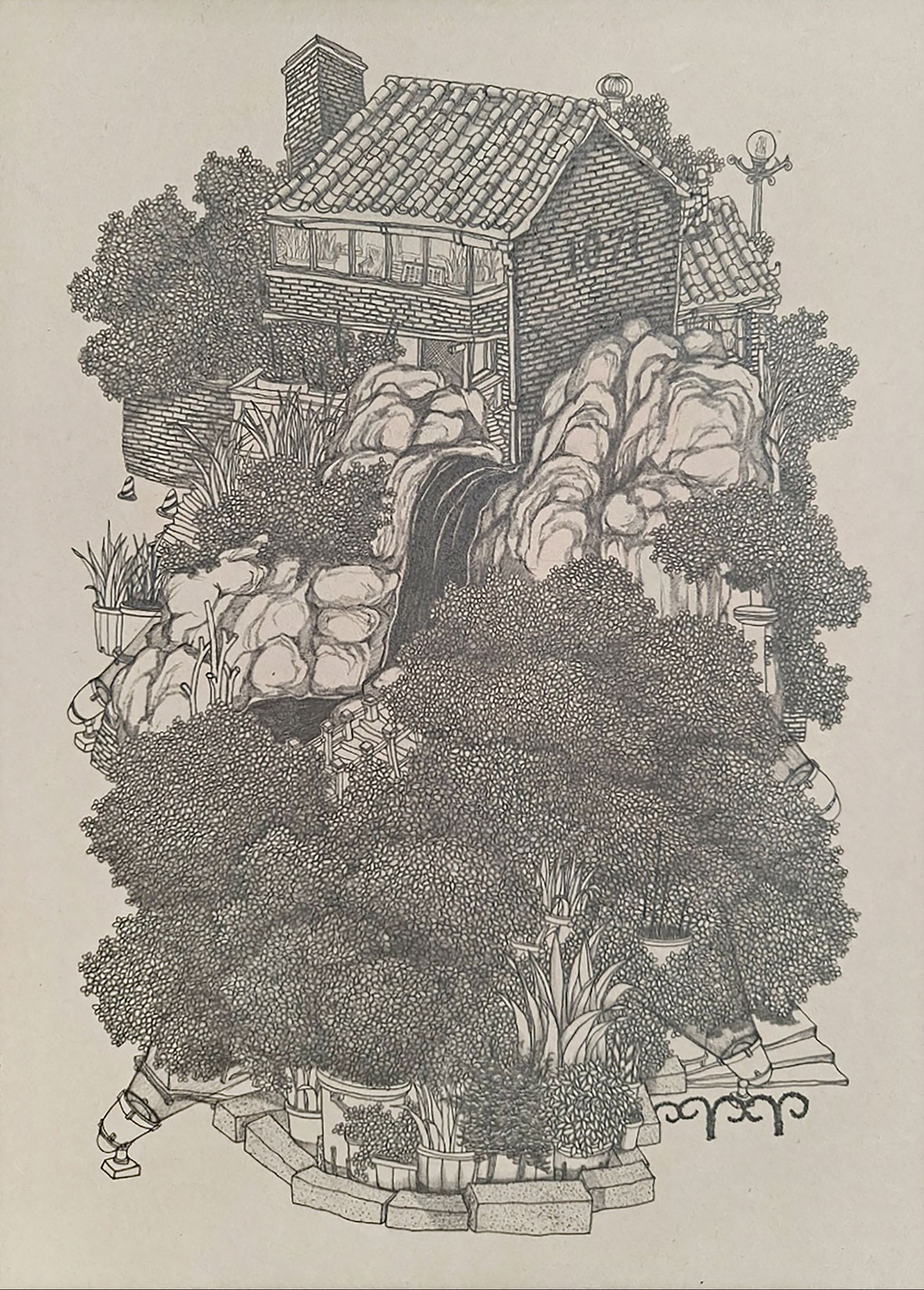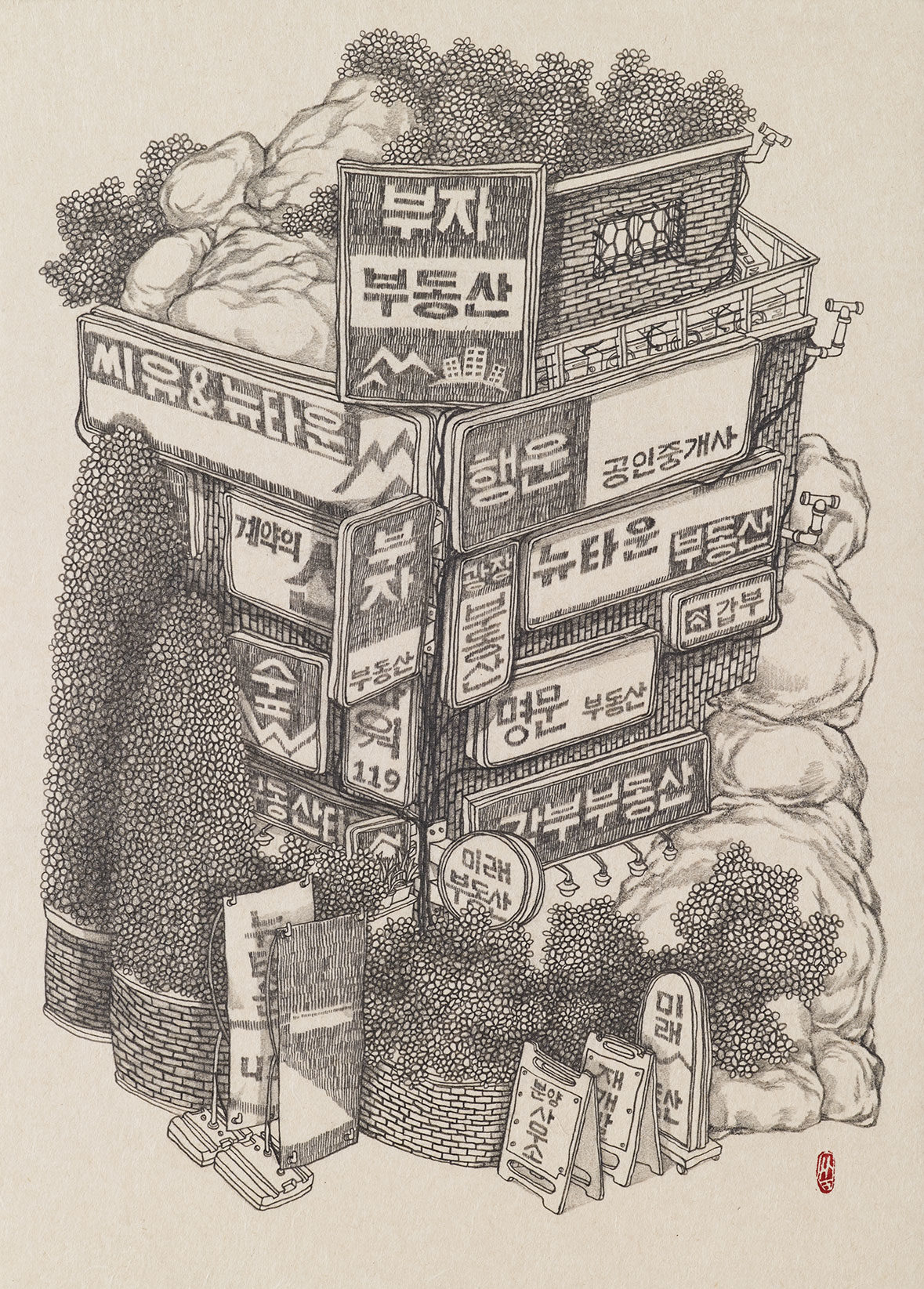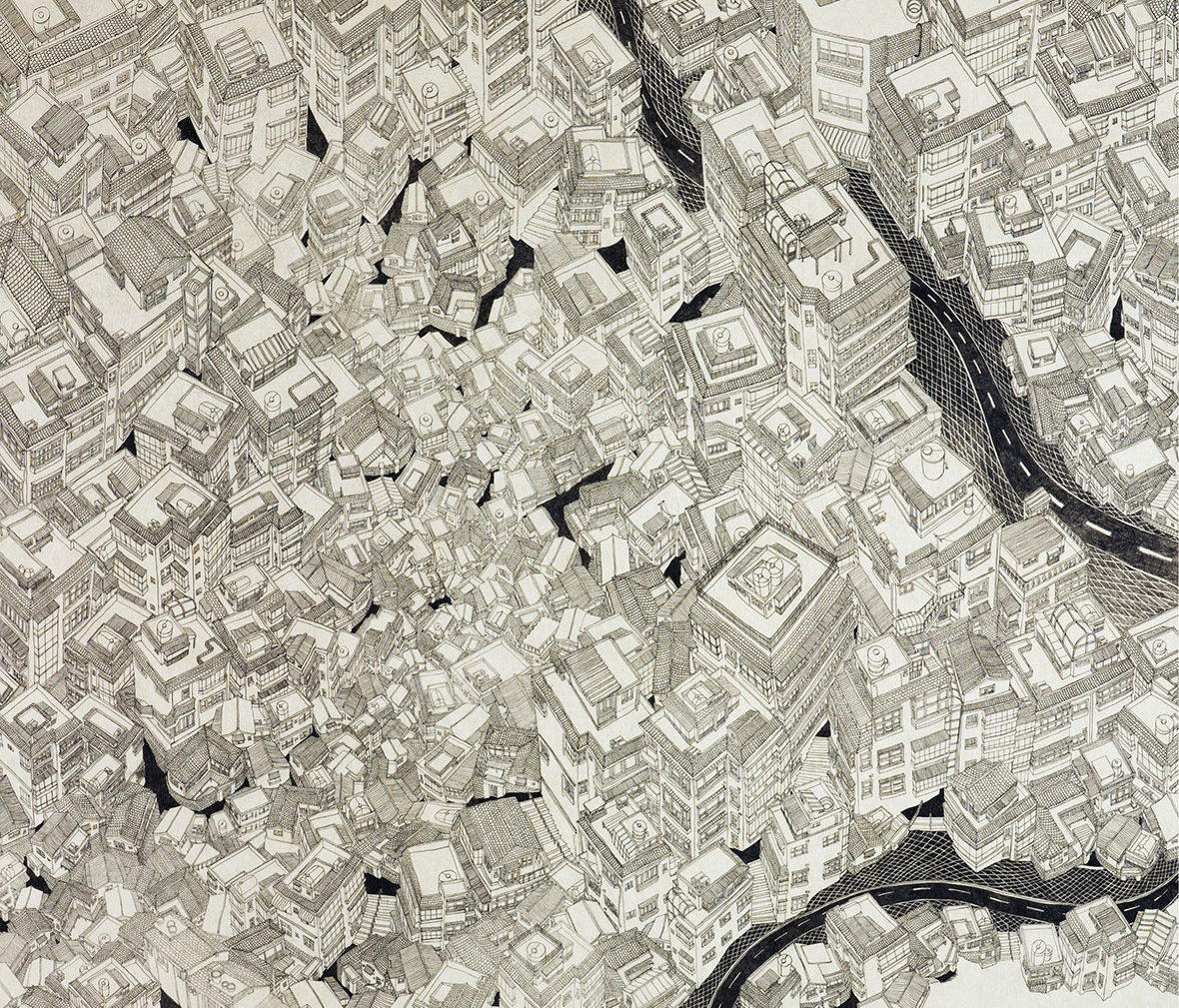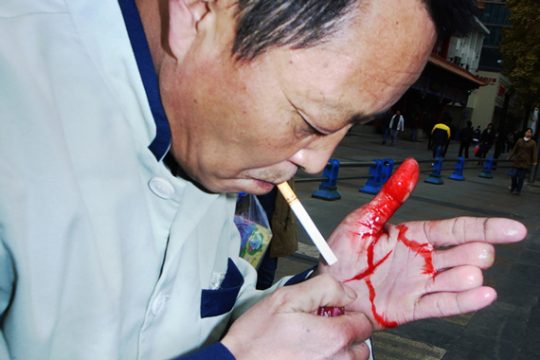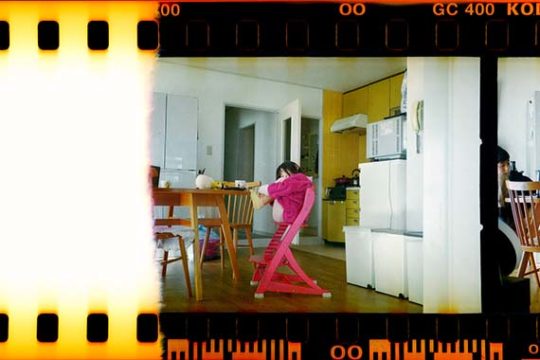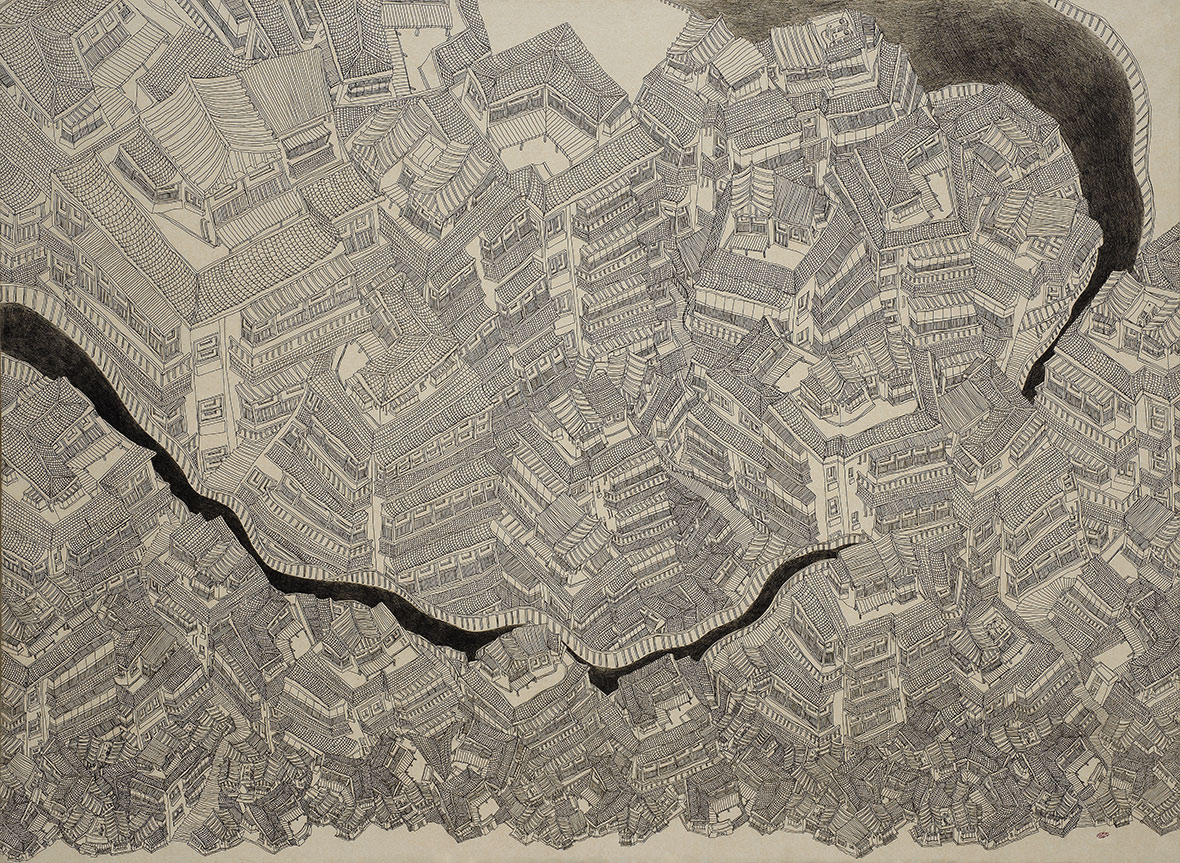
What makes a neighborhood? Is it the people? The buildings? The streets? Korean artist Heo Hyeon-sook would argue that it’s all of the above. However, in her work, she focuses on the built environment as the representation of the human lives that inhabit it. Everyday details of an old home that we may overlook—such as household items, patches of gardens, and visible renovations—are records of the people who lived there and their existence can stretch back generations. “I refuse to see these things as old and obsolete; Iconsider them to be a wonderful archive containing unique stories and history of people from the past,” she argues.
街坊由什么构成?人、建筑、还是街道环境?在韩国艺术家许贤淑(Heo Hyeon-sook)看来,所有这些加起来共同构成了街坊的概念。她的作品将韩国街坊细致描绘,那里有低矮的平房、植被还有住过痕迹。瓦砾之间,处处是生活的点滴,后院摆放的坛坛罐罐、空调室外机、商店招牌,等等这些生活中看似不起眼的老旧细节,都埋藏在她的绘画里。“我不认为这些元素陈旧或只停留在过去式。在我看来,它们是生活的档案,讲述事物、人还有历史,”她说。
Her illustrations have a surreal feel to them, with buildings teetering in unrealistic ways and climbing up vertical slopes. Walls unfold like paper notes, crowding out any walking space. The areas Heo depicts are actually built into steep hills and the eagles-eye perspective are based on her own observations of city life, but she also uses her artistic license to include more information than our eyes or a camera could capture, such as splaying open a building to show all four walls and the roof all at once. “I don’t want to make a one-dimensional reproduction,” she says. “Instead, I express multi-faceted stories within a single artwork. There are so many stories contained in traces, features and functions of a single house, and my artwork contains all of them at once.”
许贤淑的作品看起来并不真实,建筑物像童话故事里的插图一样,给人一种摇摇欲坠的不规则感。建筑的屋顶、墙壁严丝合缝地粘连在一起,拥挤到完全没有行走的余地,就连后花园里也摆满了物品。
她笔下的街坊小巷,位于陡峭的山丘之上。在她的作品中,垂直与俯瞰视角处于同一平面,她希望通过多重视角,将街的多维度展示在同一平面上,建筑与周遭都被平摊呈现,这是相机和肉眼都无法完成的效果。许贤淑解释说:“我不想单一维度的创作。相反,我想在一件作品中表达多方面故事。一栋房子,从外观、用途到岁月的痕迹,如此丰富的信息量,我希望我的作品同样可以呈现。”
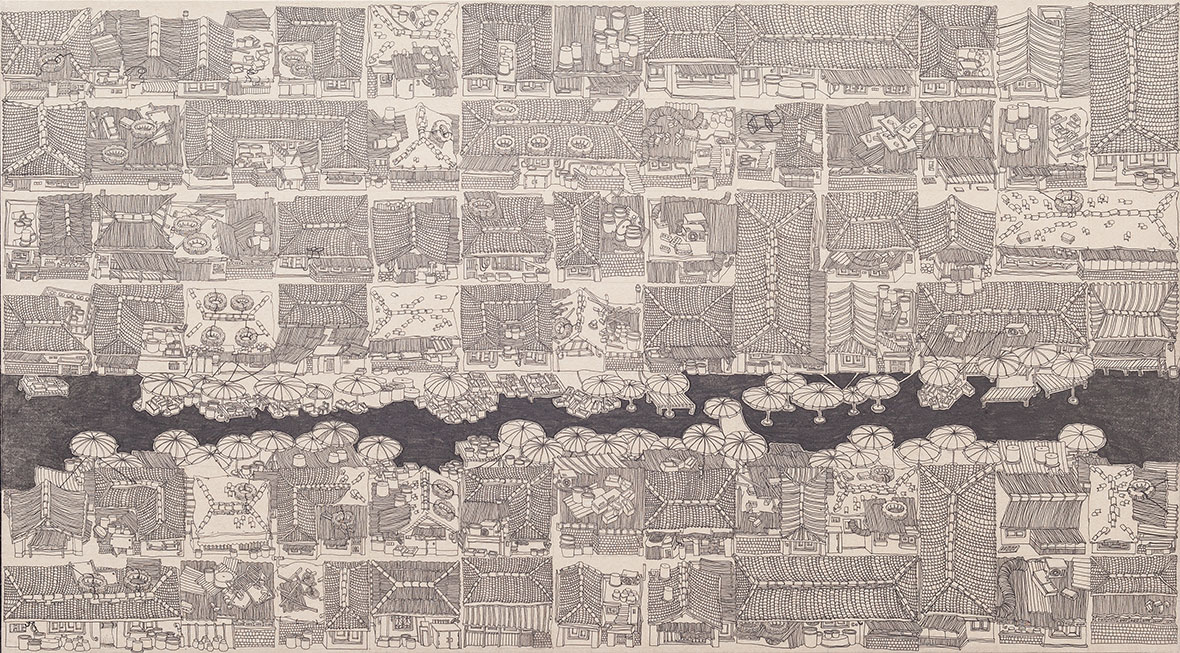
Heo zeros in on communal lives across Seoul, recreating neighborhoods gone or disappearing with pencil on beige Korean bark paper. It looks archival due to the traditional mediums and style, helping cement the recent past and the precarious present in our collective memory. Her work presents scenes of unimaginably dense, low-rise cityscapes in the style of traditional Korean landscape painting to record real and inferred histories at risk of being forgotten forever. Her style commits them to the past, overtly claiming them as historical, but keeps them alive with energy and passion.
许贤淑平时关注首尔公共生活,她喜欢把那些老街用铅笔画在树皮纸上。这让她的作品看似一部城市历史档案,引起观众对于过去和现在之间的思考,加深人们的集体记忆。绘画方式上,她选择韩国传统山水画风格,尝试与过去进行联系,并融入自己对画面的理解,为作品注入活力和创意,赋予其生命力。
Features of landscape painting, like the characteristic dark mountains and rivers that frame the edges and slide through a scene, are common in Heo’s metaphorical cities. Rivers and identical thoroughfares serve as a gathering space where people can unwind and socialize or shop. The river of her childhood was a place to do laundry and then became a communal park. “The works that I create are inspired by my town, and the river and the road are depicted as an ever-present existence,” she explains. They’re core features. Whereas European and American-designed cities feature large central squares, Korean cities revolved around and grew out of these rivers.
正如上述所说,一些中山水画经典元素频频出现在她的作品当中——譬如以深色勾勒的河流,它们偶尔位于画面的边缘,或是蜿蜒于城镇之间。在她童年的记忆里,河边最早是附近居民们洗晾衣服的地方,后来才逐渐演变成公园。“作品的灵感来自于我的家乡,那里的生活围绕河流展开,”她回忆道。在欧美国家,城市的设计以大型的中央广场为特色,而在一些国家,城市往往依水而建。
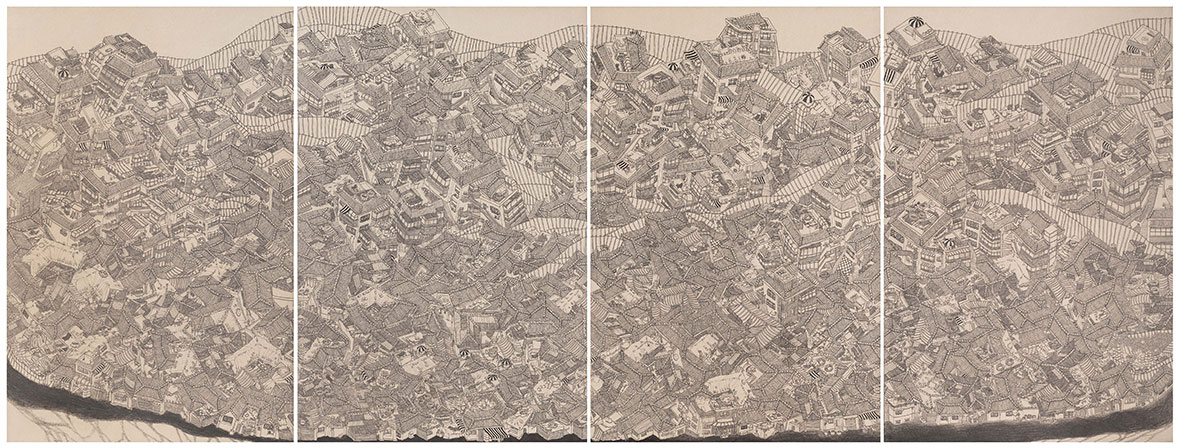
When Heo was just 9 years old, her family of three generations was unceremoniously and forcibly removed from their home, and they had to move a few times after that before finally settling again. She remembers those early years wistfully, surrounded by loving grandparents, caring neighbors, and parents’ friendly coworkers. When her grandparents passed, she realized there were no photographs or documents from her days with them. So she set out to recreate them through art based on memories and imagination.
“I wanted to leave meaningful recordings of my grandparents’ essence with detailed and painstaking reconstructions of their everyday life,” she says. “But I use the spaces they inhabited, rather than realistic portraits.”
As such, her early works are directly inspired by her childhood: The basement level house she was born in, the schoolyard slide she played on and the street market where her father was a vendor.
许贤淑九岁时,一家三代人被迫离开家园,在经历数次搬家之后,最后才安顿下来。这些年恍惚的回忆中,慈爱的祖父母、热情的街坊邻居,都久久不能忘怀。当时过境迁,亲人朋友纷纷离去,许贤淑才意识到,并没有信物或是照片,来留住这份情意。凭借记忆和想象力,她决定以艺术来重建美好过去。
“想要把关于祖父母的一部分记忆表现出来,重现过去生活的样子,”她说道,“不是通过肖像,而是生活的真实写照,这样更温馨一点。”
她早期的作品正是基于她童年经历而创作完成的,包括她出生时住的类似电影《寄生虫》里刻画的地下公寓、学校里玩过的滑梯以及父亲曾经常摆摊的街市。她将自己去过的地方,交往过的邻居、亲戚和友人,纷纷反映在创作当中。
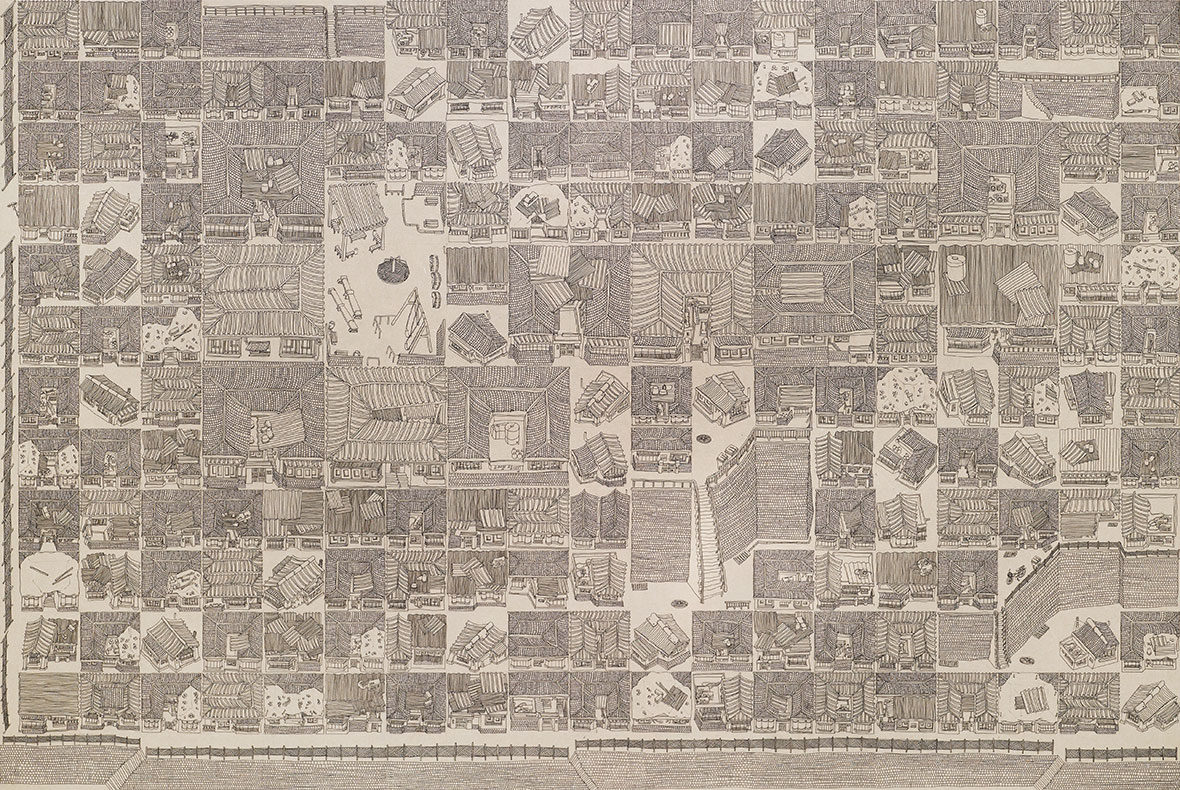
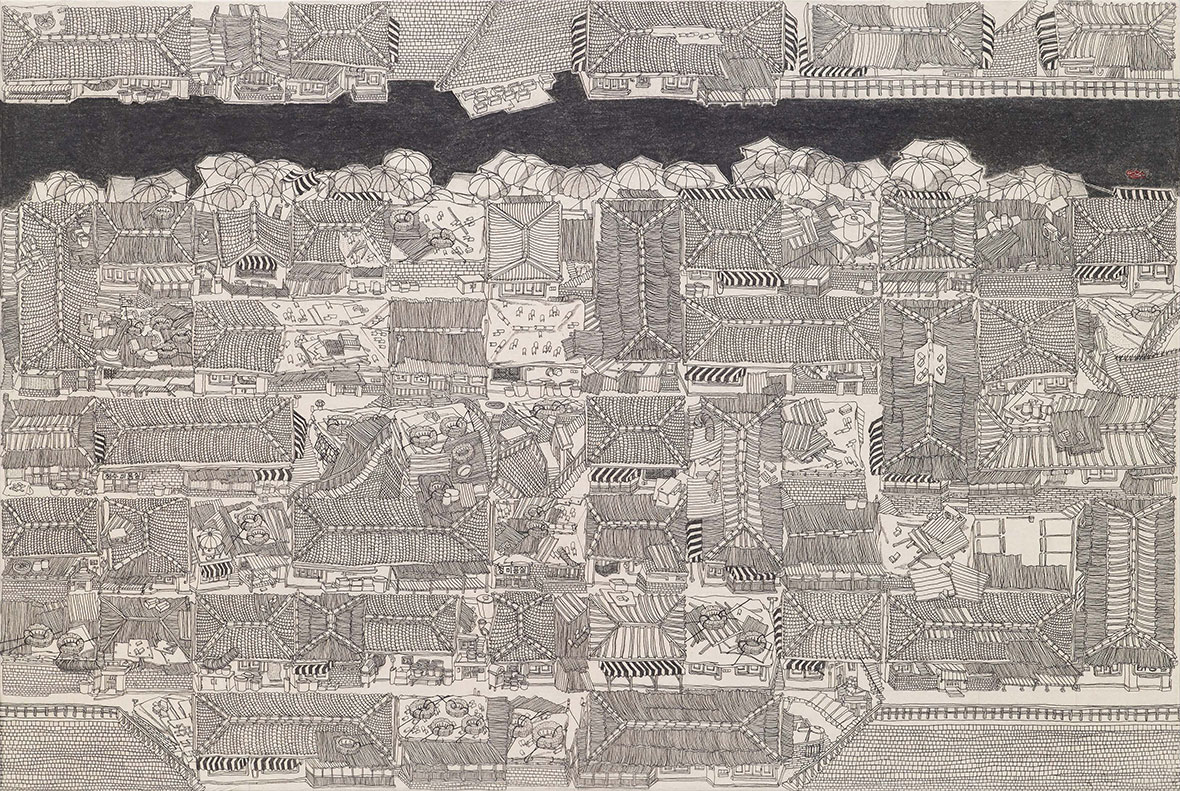
Relying on memories can be a tricky thing and her affection is colored by nostalgia. When you look at Heo’s drawings, the dilapidated buildings and tight alleyways don’t look pleasant. But to her, it was a wonderland of joy, an endless maze of paradise and adventure. The one building still standing from the neighborhood of her youth—located across the street from her current studio—is her old school, which she says felt gigantic but is actually quite small. The playground is now a vacant lot.
“I may have lived in a tiny and not-so-pleasant house with an outdoor bathroom. I may have lived in an alley too narrow for cars to fit through. Yet the mental space that represents my childhood is constructed with fond of memories of my youth,” Heo reasons. “But I feel sorry for having the best childhood imaginable when for my parents it was the absolute worst. The home of my childhood is an edited version of reality; a compilation of the best-of.”
The neighborhood and those who inhabit it were Heo’s extended family. She says her parents were always busy at the factory, and so the woman living above her, the lady living behind her, and the storeowners next door took care of her. “Back then the whole town was involved in raising the kids. The love that everyone in the neighborhood showered me with remains deep in my heart.”
但有时记忆并不确信,记忆也会因怀念而多出一层滤镜。观看许贤淑的画作,破旧建筑和狭窄街巷看起来并不那么赏心悦目,但对她来说,这里是充满乐趣的花园,是回味无穷、充满冒险的记忆迷宫。她如今的工作室,正对儿时生活区域里的一座学校。小时候,她总觉得学校很大,但现在看来学校其实很小,学校操场如今也已变成一块空地。
“以前的房子很小,住着不舒服,连浴室都是露天的。记得那会儿巷子很窄,有的连汽车都无法通行。但每当回忆起来,却倍感开心,”许贤淑说,“但对于父母来说,那却是一段非常艰难的经历,每次回想起来又觉得过意不去。童年对于我来说,经过了情感上的编辑,只保留了美好的部分。”
街坊居民对于许贤淑来说就跟家人一样。她回忆起那时父母忙于工厂的工作,因此自己总睡在邻居家里。“那个年代,镇上所有人都会相互帮忙照看孩子。他们的关怀让我今生难忘。”
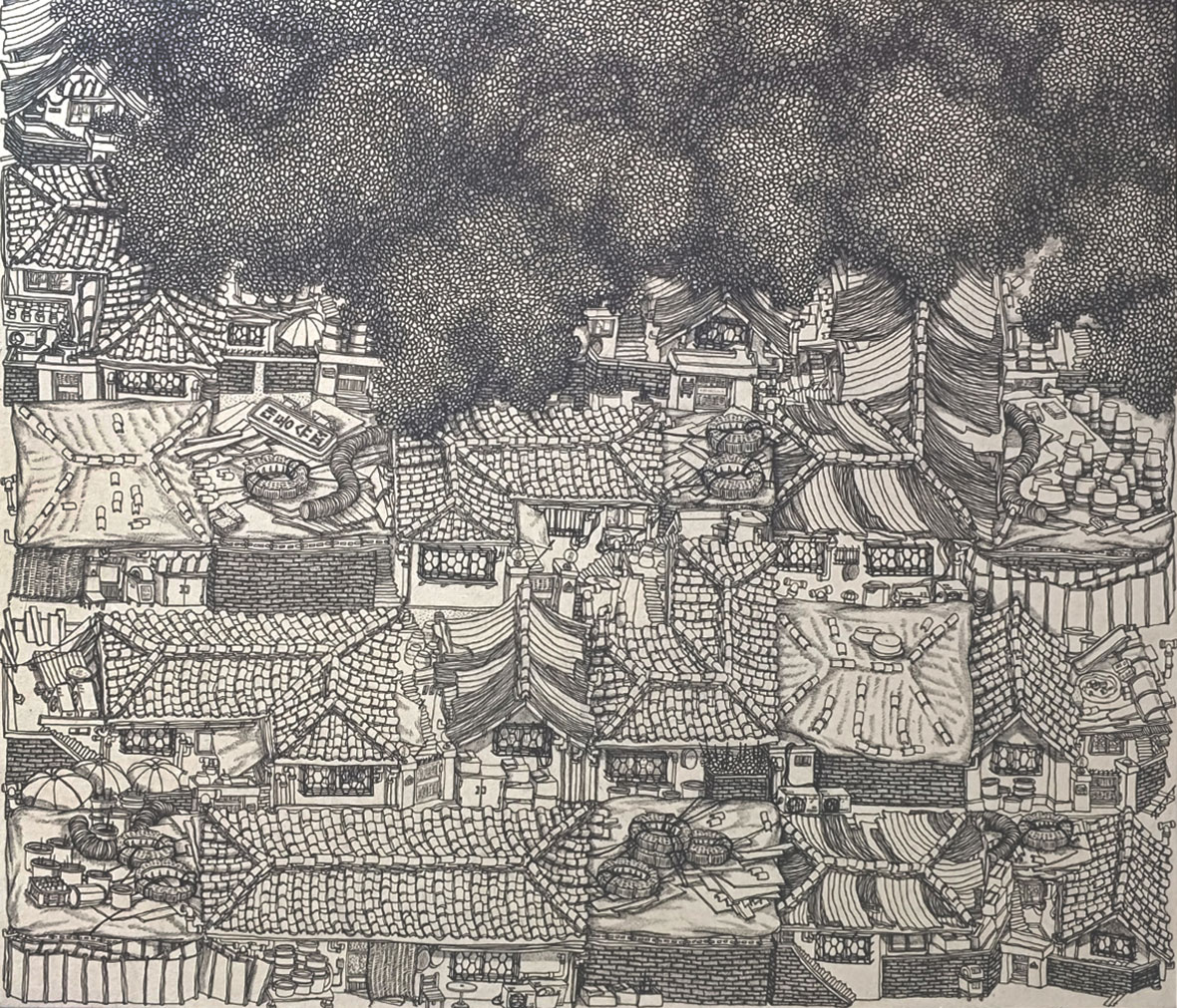
Part of the reason there are no records of those days is because cameras were not widely available in 1980s Korea. “People were focused on survival,” Heo says. “It’s up to our generation, which grew up carefree and in prosperity to record them.” But it’s also because history is written by the victors. “The history of society is really the history of a regime.”
Historic artifacts are remnants of what was enjoyed only by a select few and are not representative of the wider reality. Her childhood neighborhood was clearly not worthy of recording, but she made sure to correct that glaring oversight.
To keep it from happening to others, Heo has expanded her work to include the neighborhoods of others that are threatened by or have fallen victim to similarly rampant development. She explores the city and pours over historical documents for inspiration. The city portraits of her more recent work represent a social phenomena rather than depicting her own life, but they’re still heavily influenced by her childhood experience: “People’s hard work without self-preservation laid a foundation for progress, and they should be remembered and celebrated.”
80 年代的韩国,并不是每家都有相机,“那个年代,人们一心只想着努力生存。这让我们这一代人肩负一种责任,对于我来说,责任便是记录过去。而那些广为流传的历史,通常是关于某某人的丰功伟业,社会的历史实际上是权力的历史,平凡人的历史却查无踪迹。”
历史文物不过是曾被少数精英所拥有的物品,并不能代表民众百姓。也并不是逛逛博物馆,就能了解一座城市的过去。而童年记忆里的街坊显然没有任何人来记录,她愿意用自己的作品来改变人们对于历史的观念。
为了“留住”更多地方的记忆,许贤淑扩大了她的创作范围,包括更多逐渐被城市现代化吞噬的街坊。她四处探索这座城市,翻阅历史文献来寻找灵感。她的作品也不再仅仅关于自己,而是关于整个社会。但童年的那段经历,仍对她启发最大,许贤淑说:“每一个人,都是社会默默无闻的贡献者,是城市进步的积淀,每一个人,都值得被铭记和赞颂。”
Like our stories? Follow us on Facebook and Instagram.
Instagram: @heohyeonsookart
Contributor: Mike Steyels
Chinese Translation: Olivia Li

